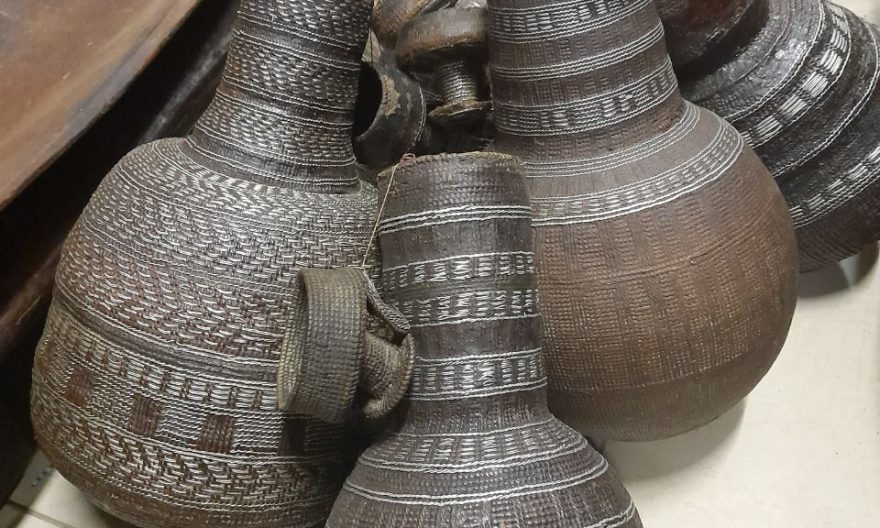
BY NAOL GIRMA
The culture of any society is enshrined in the customary beliefs, socio-economic forms of production and reproduction and the material traits or features that it imprints on the physical landscape. Ethiopia is one of the oldest civilizations in the world with a recorded history of more than 3,000 years. The heydays of Ethiopia’s civilizations have left an indelible imprint on the landscape through material (artifacts), ideological (menti facts) and institutional (socio facts) components of culture. The obelisks of Axum in the Tigray region of Northern Ethiopia and the rock-hewn churches of Lalibela in the highlands of Wollo in North Central Ethiopia represent some of the most illustrious and astounding artifacts or material manifestations of Ethiopian culture.
Ethiopia has great ethnic and linguistic diversity, and styles in secular traditional crafts vary greatly in different parts of the country. There is no doubt that Ethiopian art is one of the greatest in Africa if not in the world not only for its long life but also for its authentically Ethiopian characteristics, inspiration, themes and forms. Ancient Ethiopian artist did not copy their crafts from foreign sources but developed them independently from any outside influence. Likewise, the tools of their trades, including the pains and brushes were shaped from the raw materials that were available at that time. They used natural colors produced from plants or charcoal mixing them in ways that suited their purpose. The results were astounding not only for their times but also continue to amaze audiences across many centuries. Traditional Ethiopian art largely takes its inspiration from spiritual and secular sources and molds them in such a way as to give expression to the daily lives of the people but also explore and shape their spiritual world which is less evident to the naked eye. Ethiopian church and mosque artists based their works on the themes of the Bible or the Koran and used them to teach the folks about the virtues that are specific to their social and religious environments.
Art comprises a highly diverse range of human activities engaged in creating visual, auditory, or performed artifacts— artworks—that express the author’s imaginative or technical skill are intended to be appreciated for their beauty or emotional power.
Today, Ethiopia is seen as a cultural powerhouse, boasting a vibrant and dynamic art scene. This article showcases the unique features of Ethiopian arts and culture.
Just in the heart of Addis Ababa, there is a place you can really call little Ethiopia. At Churchill road Zebra Gallery all Ethiopia culture is represented from Jimma to Wollega Chair to Borena Chocho to Axum Icons.
Born just half a mile away from Zebra Gallery Mr. Benjamin is the Manager at the Art gallery, with a BA in business Management from Gondar University he finds his way in making this place the best in the country and even in East Africa. With a fine cooperation and innovation with the owner Mr. Tekle, as per their dedication they are getting fruitful results in their endeavors, and their reward is the loud wow sound and the big smile and excitement in everyone seting a foot for the first time in zebra Gallery.
According to him, he saw a couple of tourists visiting and taking home some little reminders of their stay in Ethiopia a place of cultural amalgam amazingly interrelated. The cultural gift items really open eyes to a different perspective of life style and bring about a new way of understanding of human existence for foreign visitors. As I witnessed, local visitors are excited to see what they already know about their ancestors way of life through the collection and be reminded of what they should not loose as globalization effects seems to make the world conduce to a single culture and way of life. To keep the spectacular culture alive, you need to have a reminder in your home, in your office at the desk of what you can buy at gift stores.
He further expressed that a Coptic cross would be a good decorative item and spiritual vibe igniter to all hang on your wall. Foreign tourists love these artifacts . This situation creates a potential market for the local handicraft makers. It will definitely help the economy if we promote and try to increase the tourist flow and now market seems booming as a foreigner related to me now I am at home. Ethiopia is the cradle of human species and every visitor feels the same . As I witnessed and had a wonderful conversation with visitors from Japan to Argentina. As I understand Ethiopia’s image is different as we assume and the world assume. A very great picture of Ethiopia’s origin of Man kind is widespread , what is left is just keeping the progress of peace and stability.
“The products portray Ethiopia’s deep culture from household stools to milk containers to Coptic crosses I am amazed to find such cultural jewels confined in one place representing Ethiopia from East West to South North”.
A traveller visiting Ethiopia cannot fail to be impressed by the color and individuality of its cultures and traditions. Whether in the bustle of the town or the tranquility of the countryside, there is a strong sense of identity and pride that is visible in all aspects of life.
THE ETHIOPIAN HERALD THURSDAY 5 JANUARY 2023





